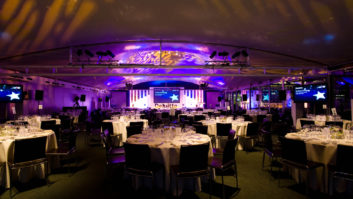 We are living in the era of USB-C sunrise. With Apple finally rolling out USB-C ports on phones and tablets, it’s a near-universal port for personal devices – and as we learned from HDMI, where consumers go, the commercial industry often follows.
We are living in the era of USB-C sunrise. With Apple finally rolling out USB-C ports on phones and tablets, it’s a near-universal port for personal devices – and as we learned from HDMI, where consumers go, the commercial industry often follows.
There’s a lot of cause for enthusiasm around the growing ubiquity of USB-C. It’s a remarkably versatile connection, with the ability to support multiple protocols through a single port. USB-C’s capacity to handle data, power, UHD video, and audio over a single cable make it a very attractive option for streamlining commercial AV setups. USB-C is not quite as “universal” as it looks at first glance, however. To unlock its full potential for commercial applications, integrators need a keen awareness of the many optional features, capabilities, and limitations of USB-C cables and protocols.
USB-C cables can support USB 3.1 Gen 2 Alternative Modes, or “Alt Modes.” Alt Modes are central to expanding the utility of USB-C in commercial AV settings because they allow a USB-C cable to carry non-USB signals, including DisplayPort, HDMI, and Thunderbolt. With Alt Modes, integrators can leverage USB-C to connect and power sources, displays, projectors, and more.
Here’s the catch: Alt Modes optional features are not implemented on every USB-C port. Some ports are labelled with their Alt Mode capabilities, but sometimes, the integrator just has to hook up a signal generator and verify. You can absolutely use USB-C for AV signal transportation, but doing so requires careful product qualification to ensure every port in the signal chain supports the required Alt Modes.
In the bad old days, many manufacturers implemented proprietary USB-C fast-charging protocols. If you mismatched device, cable, and charger brands, the device might charge at a glacial pace – or worse, the charger might damage the device by delivering too much power.
Now, many newer devices have adopted the USB Power Delivery (USB PD) charging standard. USB PD is a universal charging solution: a chip embedded in the connector allows USB PD-enables cables to negotiate with host and hub devices to determine their capabilities and deliver the optimal amount of power. With USB-PD, a display can power a source or vice versa.
However, not all USB-C cables support this standard. If you’re planning to use USB-C cables for power delivery, I strongly recommend seeking out cables with USB Implementers Forum (USB-IF) certification to ensure compatibility with USB PD.
LENGTH LIMITATIONS
USB-C is more of a sprinter than a distance runner: it can deliver a lot, but only over short distances. There’s no specified maximum length for USB-C cables, but for practical purposes, passive USB cables used for AV transport shouldn’t exceed 1m. Active cables can reach 2-3m – but for any distance beyond that, you will need to explore extension solutions. We are already seeing an emerging class of Cat cable and fibre extenders for USB-C signals. As this connector continues its march towards ubiquity, I anticipate seeing more capable and affordable solutions enter the market, making USB a viable option even for large commercial applications.
In the coming years, integrators can expect USB-C connectivity to become a table-stakes requirement for projects ranging from sports bars to meeting rooms. Its apparent simplicity is deceiving – integrators will need to navigate a minefield of compatibility issues – but the benefits are worth it. As the era of this universal connector dawns, now is the time to seriously invest in research, product testing, and design exploration using USB-C technologies.







